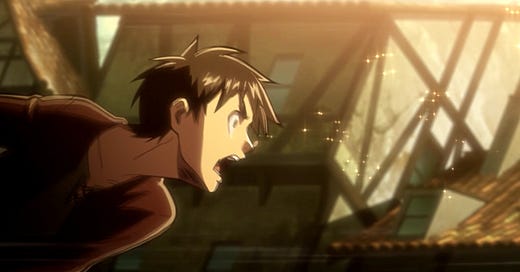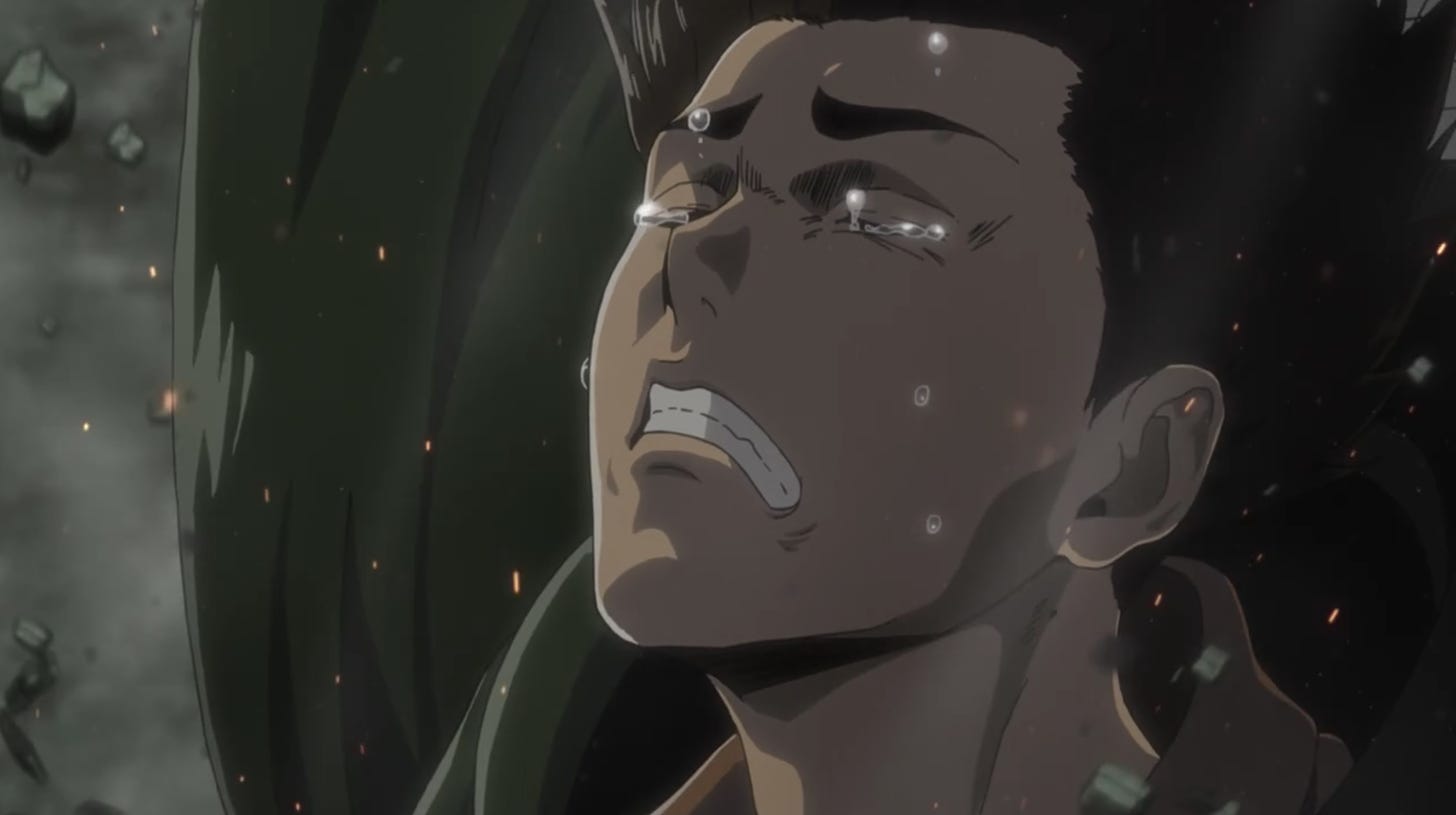Tears of Eren Jaeger: Rage as a Coping Mechanism
Before the finale of Attack on Titan aired a week ago, I spent some time going back and revisiting key scenes from the series. When I was watching the iconic moment from season 2 where Reiner Braun and Bertholdt Hoover reveal themselves as the Armored and Colossal Titans, something about Eren Jaeger’s response struck me in a new way.
After Reiner transforms, grabs Eren, and leaps off the wall, Eren remembers past moments where he bonded with Reiner and Bertholdt during training. (There is a flashback to the key conversation where Reiner talked about “going back to his hometown.”) As he remembers this, Eren – devastated by his friends’ betrayal – cries; and because he is falling down through space, the tears, instead of falling, seep out of his eyes and fly up, away from his face. The moment passes almost immediately, though. After the flashback ends, Eren screams at Reiner and Bertholdt (“YOU DAMN TRAITORS!”), transforms into the Attack Titan, and begins to fight them.
It struck me that this moment reveals a defining pattern of Eren’s psychology. It is easy to gloss over Eren’s tears in this moment (I did not remember them from my first viewing) because, in a way, Eren himself glosses over them. Instead of fully internalizing the emotional pain he feels, he tries to protect himself from it by turning it outwards, reacting angrily and violently against those who hurt him. In this moment and throughout Attack on Titan, Eren uses rage to cope with grief.
This image of Eren’s flying tears occurs at least one other time in the series. In the very first episode, when Eren’s mother is being eaten by a Titan, Eren is once again being carried away (this time by Hannes, who is trying to save his life), and once again, the fact that he is in rapid motion while he is crying causes the tears to fly out of his eyes:
The death of Eren’s mother, of course, fuels his rage and his drive to exterminate the Titans who killed her – but this rage keeps expanding until Eren is trying to wipe out nearly all of humanity. In the final episode, the moment of Eren’s mother’s death is dramatically and startlingly reframed: Eren reveals to Armin that, in a kind of deterministic time paradox, he sent the Titan to kill his mother in order to bring about the future where he uses the power of the Titans to avenge her death. Eren’s rage, which was initially an understandable and even normal response to a traumatic event, has become a self-sustaining and endless loop in which he is trapped.
“Keep moving forward,” “Fight or die” – all of Eren’s catchphrases express his driving desire to avoid pain by turning it into motion and action. But this strategy to numb pain prevents it from being truly healed. As the psychologist Carl Jung writes, “Neurosis is always a substitute for legitimate suffering.” In the long run, Eren’s attempts to avoid pain cause exponentially more pain for himself and for others. Though Eren uses rage to try and turn his suffering outward, away from himself, in the end, it becomes abundantly clear that the person who has caused Eren the most suffering is Eren.
Among other things, Attack on Titan invites us to take a hard look at the strategies we rely on to avoid sitting still with our pain. Maybe, if we let ourselves feel it, the pain won’t kill us; but the things we use to kill the pain might.





